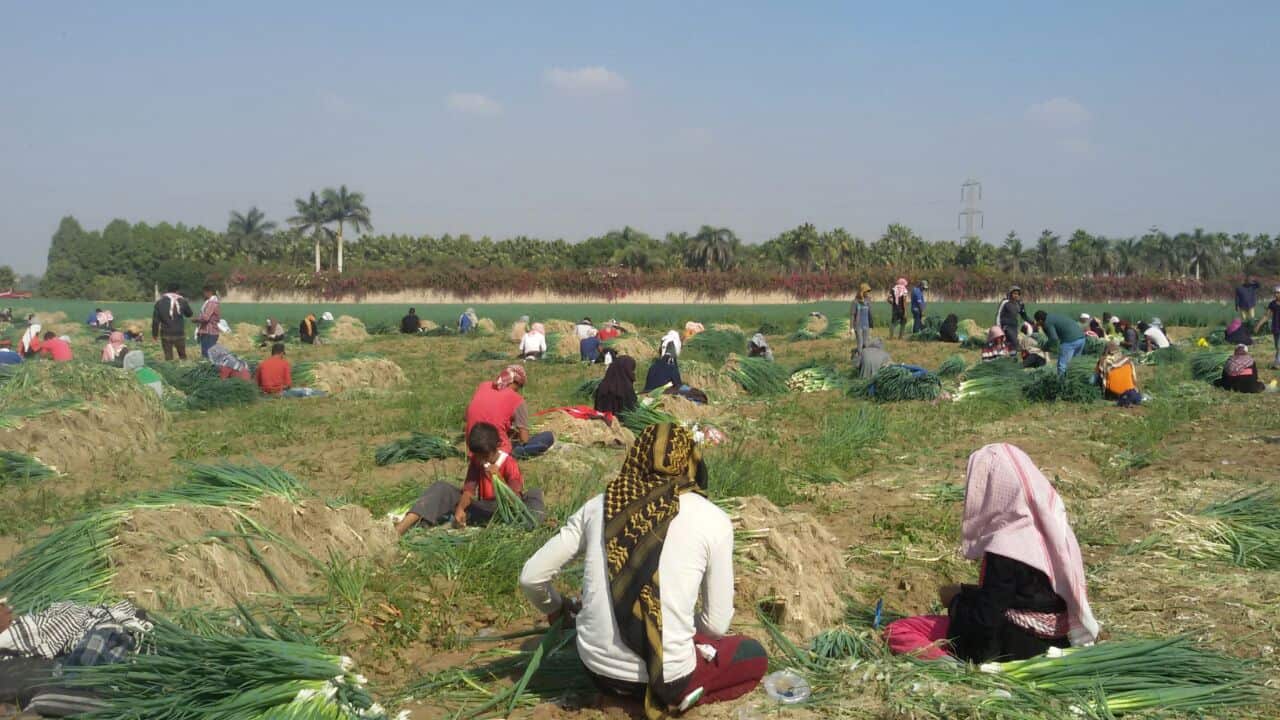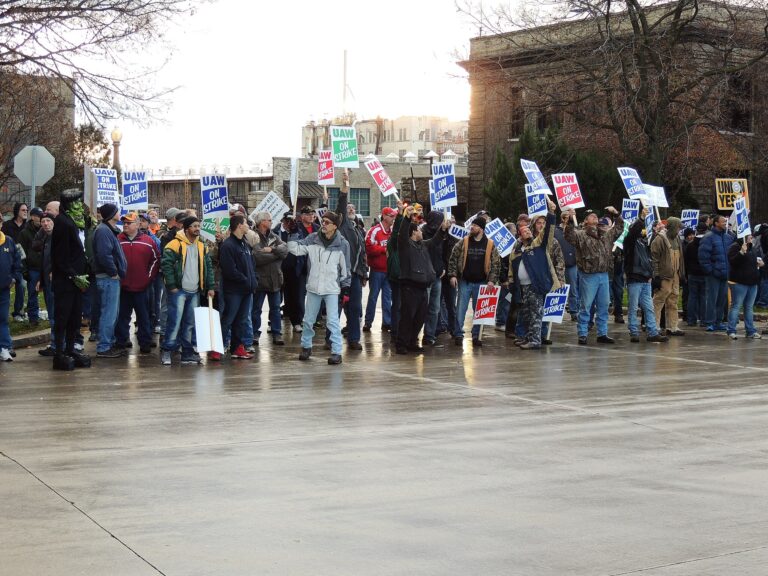Ross Slaughter is a student at Harvard Law School and a member of the Labor and Employment Lab.
Earlier today, in Cedar Point Nursey v. Hassid, the Supreme Court held that a California regulation that grants union organizers temporary access to farm property to speak with agricultural workers is a per se taking under the Fifth and Fourteenth Amendments. The decision represents a dramatic rightward shift in the Court’s takings jurisprudence, one that calls into question a whole host of government regulations designed to protect workers and the public.
Writing for the Court’s six conservative justices, Chief Justice John Roberts explained that there were two types of takings: physical appropriations and regulatory takings. Regulations that limit “an owner’sability to use his own property” are only takings if they go “too far,” a fact-intensive inquiry that looks at the economic impact of the regulation, its effect on the owner’s “reasonable investment-backed expectations,” and the nature of the government action. By contrast, physical appropriations are subject to a “simple, per se rule: The government must pay for what it takes.”
The Court then concluded that the union access regulation was a physical appropriation, subject to the per se rule. Emphasizing the importance of the right to exclude, the Court held that any interference with that right required compensation. It denied that its past cases drew a distinction between temporary and permanent physical invasions, asserting that the per se rule applies whenever the government “appropriate[s] a right to invade” private property. It distinguished PruneYard Shopping Center v. Robbins and Heart of Atlanta Motel v. United States— two seminal cases that rejected takings challenges based on the property owners’ right to exclude — because, unlike the union access rule, they involved regulations of businesses that were “generally open to the public.” Finally, it dismissed as irrelevant NLRB v. Babcock & Wilcox Co., which recognized that workers on remote job sites a right under the NLRA to have union organizers visit the premises. Indeed, it suggested that Babcock’s “highly contingent access right” might present its own takings issues.
The majority then outlined three limits on its holding. First, it affirmed that isolated, unauthorized trespasses are not takings. Second, regulations that are “consistent with longstanding background restrictions on property rights” are not takings either. Third, the government can require owners to allow access to their property in exchange for a government benefit, if there is an “essential nexus” and “rough proportionality” between the condition and the underlying regulation. While the Court thought that most “standard health and safety inspections” would fit within the third exception, it asserted that the union access regulation was not “germane” to any benefit to the employer or risk to the public. And because farming was a “basic and familiar” use of property, the government could not “hold hostage” the right to employ farm labor in exchange for union access.
Justice Kavanaugh concurred. Injecting the phrase “via the Constitution” into the Babcock Court’s observation that the “National Government . . . preserves property rights,” he interpreted the case as one of constitutional avoidance. Because, in his view, the union access rule went farther than Babcock would allow, he thought that Babcock supported the Court’s holding.
Justice Breyer, joined by Justices Sotomayor and Kagan, dissented. He argued that California’s access rule did not “appropriate” anything; it merely “regulate[d] the employers’ right to exclude others.” And the imposition imposed by the regulation was temporary — it did not authorize a permanent and continuous occupation of the employers’ land. Regardless of whether they found a taking, the Court’s previous cases had all applied a balancing test to temporary invasions of property. It had applied a per se approach only to permanent invasions. This distinction, he said, was critical to the smooth functioning of the many regulations that depend on temporary access to private property, everything from inspecting food and foster homes to monitoring owl populations.
He then expressed doubt that the majority’s amorphous exceptions would protect these regulations: What counts as an “isolated” trespass? Are the only “longstanding” background restrictions on property those that existed in 1789? What benefits would be sufficiently special to authorize the government to exact an access right in exchange for them? The majority held that the ability to employ farm labor could not be “ransomed” in exchange for the access right, and it did not even consider the benefit that labor peace — an asserted purpose of the Agricultural Labor Relations Act — might confer on employers. If these benefits did not justify a more nuanced takings analysis, what would?
Justice Breyer ended by noting that the Takings Clause does not categorically prohibit taking private property for public use, it only requires just compensation. California should have the opportunity to provide that compensation. If they did, the plaintiffs would not be entitled to injunctive relief and the union access rule could live on.
As Andrew Strom and I have noted, the position that the Supreme Court adopted today represents an extreme rightward lurch in its takings jurisprudence. While it will take time to unpack the implications of the decision for workers, consumers, and other regulatory beneficiaries, three elements of the opinion stand out.
First, the majority treats workers — and particularly farmworkers — as uniquely underserving of protection. The Court suggested that the government could permissibly regulate businesses that are “generally open to the public,” but accorded no significance to the fact that the plaintiffs had opened their property to workers. Similarly, in arguing that governments could permissibly condition certain benefits on access to private property, the Court considered only whether the regulations benefit employers or the public. Workers, again, were invisible. Finally, by suggesting that farming is “a basic and familiar use of property” that the union access rule “h[e]ld hostage” and “ransomed,” the Court implied that property owners have a property right, not simply to farm their own land, but to employ others to farm it for them without government intervention. Given the dark history of slavery and the legacy of racialized oppression in U.S. agriculture, this is deeply troubling.
Second, as Justice Breyer and Ben pointed out, takings are permissible as long as the government provides just compensation. Cedar Point suggests that even the extremely limited Section 7 access right that survived Lechmere, Inc. v. NLRB is constitutionally suspect. But while it is irksome to have to pay corporations to follow the law, the amount of compensation owed may be minimal. The plaintiffs in Cedar Point alleged no damages, probably because it would be difficult to show that allowing union organizers to speak with employees during non-work time costs them any money.
Third, labor advocates can still push state courts to recognize background limitations on property law that may protect employees. While Cedar Point raises a number of interesting questions about the interaction of state property law and federal constitutional law, the Court reaffirmed that property rights are generally “creatures of state law.” As a result, state courts should be accorded deference in assessing the scope and existence of “traditional common law privileges to access private property.” Some of these may be quite broad, especially where workers also live on the employer’s property. At the very least, state court victories would force a more explicit confrontation between the conservative justices’ commitment to federalism and their expansive vision of property rights.










Daily News & Commentary
Start your day with our roundup of the latest labor developments. See all
January 7
Wilcox requests en banc review at DC Circuit; 9th Circuit rules that ministry can consider sexual orientation in hiring decisions
January 5
Minor league hockey players strike and win new deal; Hochul endorses no tax on tips; Trump administration drops appeal concerning layoffs.
December 22
Worker-friendly legislation enacted in New York; UW Professor wins free speech case; Trucking company ordered to pay $23 million to Teamsters.
December 21
Argentine unions march against labor law reform; WNBA players vote to authorize a strike; and the NLRB prepares to clear its backlog.
December 19
Labor law professors file an amici curiae and the NLRB regains quorum.
December 18
New Jersey adopts disparate impact rules; Teamsters oppose railroad merger; court pauses more shutdown layoffs.